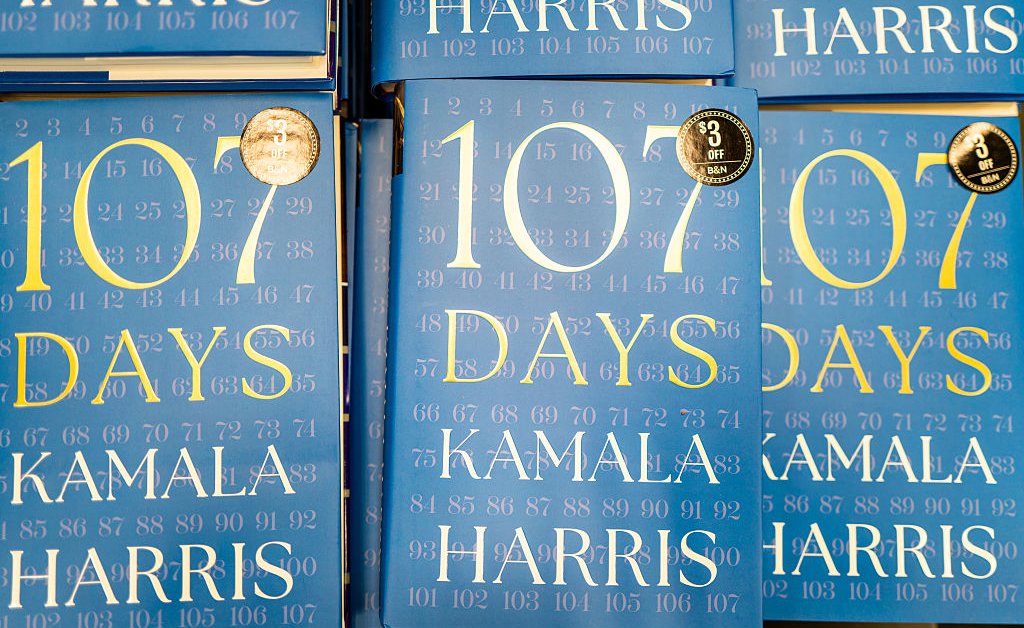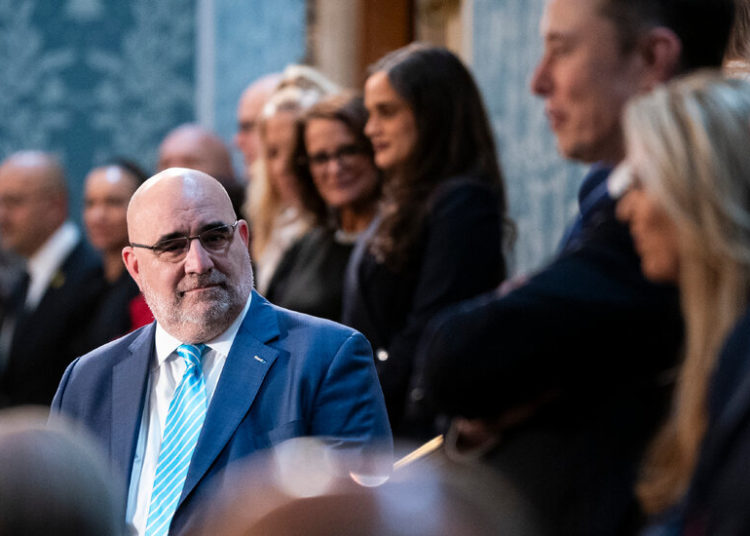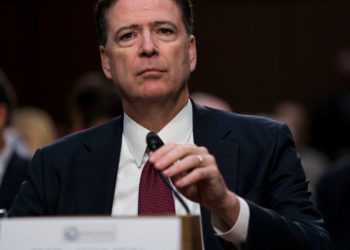Kamala Harris’ political memoir, 107 Days, revived debate over whether Joe Biden’s inner circle hid his declining capabilities before his disastrous June 27, 2024, debate against Donald Trump — actions many people believe contributed to Democrats losing the 2024 presidential election.
Yet, Biden’s critics may be missing an even more damaging flaw in the approach of the former president and his staff.
In her memoir, Harris describes delivering a speech in Selma, Ala., in March 2024 that commemorated the heroic efforts of civil rights activists who faced down brutal state-sanctioned violence on the Edmund Pettus Bridge in 1965. The speech went viral, however, because it addressed the Palestinian-Israel conflict. Although it “had been vetted and approved by the White House and National Security Council,” the West Wing was unhappy once it gained widespread attention. Harris writes that she “was castigated for, apparently, delivering it too well. Their thinking was zero-sum: If she’s shining, he’s dimmed.” She adds, “None of them grasped that if I did well, he did well” and that “my visible success would serve as a testament to his good judgement in choosing me.” Biden’s staff, however, “didn’t get it.”
The Biden team, in her telling, failed to grasp a historical lesson: from the day they’re selected, running mates—and if they win, vice presidents—serve as a constant reflection of the person who chose them. They matter because of what the choice says about their ticketmate.
In 1988, political communications expert Kathleen Hall Jamieson noted that when a youthful Dan Quayle awkwardly bounded out of a New Orleans audience to be introduced as George H.W. Bush’s running mate, he looked like “a contestant on Let’s Make a Deal.” Understandably excited, Quayle couldn’t resist a playful shoulder punch to the older, reserved Bush, who smiled awkwardly. When he took the mic, Quayle gave a rah-rah, “let’s go!” cheer that struck many as undignified.
The announcement, Jamieson observed, marked “Bush’s first major ‘presidential’ decision, but it looked like it was made on an impromptu basis.” If, she continued, “the question at that point was, ‘Who is George Bush?’, the answer was that he was someone who looked genuinely bewildered. He didn’t look like he was in control. He didn’t look presidential.”
In the days following the announcement, the Quayle choice looked even worse. A barrage of stories detailed Quayle’s service in the National Guard (rather than in Vietnam), his privileged background, and his poor college grades. It led to questions about whether the selection had been properly vetted, and the choice of Quayle seemed disastrous — for Bush specifically. Quayle was painfully aware of this. Just before delivering his address to the Republican convention, he turned to a friend and said, “God, I hate to hurt George….this is terrible.”
The Bush and Quayle team won the 1988 election, but the impression of Quayle as unfit for the job remained a drag on Bush’s reputation. When Bush was briefly hospitalized in 1991, it fueled stories about both Quayle’s persistently low approval numbers and the possibility that the president might select a new running mate ahead of the 1992 campaign. (He didn’t.)
Both during campaigns and presidencies, running mates matter because of what they say about a president’s judgment.
Read More: How Vice-Presidential Nominees Became ‘Attack Dogs’
That year, Bush’s opponent Bill Clinton surprised the political world by eschewing what had to that point been the norm: selecting a running mate to provide geographic, ideological, or age balance. He chose a fellow moderate white southerner in his 40s, Tennessee Senator Al Gore. With the rise of cable television and a 24/7 news cycle, Clinton understood sooner than most that a running mate could shape perceptions of the nominee. Choosing the right person mattered far more than checking regional or ideological boxes to balance the ticket.
When Clinton introduced Gore in front of the governor’s mansion in Little Rock, with their young families in tow, observers instantly saw the appeal and credited Clinton with a savvy choice. The Washington Post noted the “image of energy and activism” — exactly what Democrats hoped would contrast their ticket with the older incumbent Bush.
Even Mary Matalin, Bush’s deputy campaign manager, admitted that her team was “awestruck” by the visual. “The reaction was ‘Oh, my God.’ The Clintons, the Gores, all those beautiful kids in front of that quintessentially American red brick mansion, looking youthful and cheery…They had the perfect picture for their timely message: change, young, dynamism.”
Gore then spent eight years earning a reputation as a smart, serious-minded governing partner to Clinton. He managed to keep the controversies of the Clinton presidency—especially the Monica Lewinsky story—at arm’s length. That helped him capture his party’s nomination in 2000.
But Gore narrowly lost the electoral college to George W. Bush.
Bush had learned from his father’s experience and selected Dick Cheney, the former White House chief of staff, congressman, and defense secretary, as a running mate. Ironically, however, while Bush had urged his father to replace Quayle with Cheney in 1992, he in turn faced pressure to replace Cheney in 2004. In his memoir, Bush recalled how the impression grew that Cheney was actually calling the shots in the White House. Getting rid of him would help Bush show that “I was in charge.” He stuck with Cheney, though, because he was confident that his vice president knew that “I made the final decisions.”
Especially in the midst of two wars, Bush clearly understood the need to appear in charge. For him, however, that meant keeping Cheney. The New York Times reported that in retaining his vice president, Bush was “flexing his newfound political muscle.” Former Reagan Chief of Staff Kenneth Duberstein, added that in this partnership, “George W. Bush is the senior partner.”
Perhaps no race better illustrated how the selection of a running mate mattered, because of what it said about the presidential nominee’s judgment, than the one to succeed Bush in 2008. Concerned that Barack Obama was running away with the race, John McCain made an impulsive gamble, boldly picking the largely unknown Alaska governor Sarah Palin.
The parallels to Bush’s 1988 choice were striking. Within days of the announcement, a cascade of unflattering stories emerged about Palin, including for example, “Troopergate,” in which she appeared to use her authority over the Alaska Department of Public Safety to settle scores in a family dispute. Like Quayle, the struggles didn’t end with the barrage of negative news stories. Next came a disastrous interview with CBS’s Katie Couric in which Palin seemed to reveal herself to be uninformed and blithely incurious about most things unrelated to Alaska.
The resulting criticism landed on McCain as much as on Palin. TIME lamented that McCain’s “lack of interest in actual governance is disappointing; his aversion to contemplation seems truly alarming. He has done us all a favor with this pick: he has shown us exactly what sort of President he would be.”
Biden’s blunder was different. He failed to empower Harris during his presidency. After a July 2024 confrontation between First Lady Jill Biden and Harris’ husband Doug Emhoff over Harris’ loyalty, Emhoff fumed, “‘They hide you away for four years, give you impossible, [sh-t] jobs, don’t correct the record when those tasks are mischaracterized, never fight back when you’re attacked, never praise your accomplishments, and now they want you there on that balcony, standing right beside them.’”
Emhoff’s outburst sheds light on why many Americans felt like they didn’t know Harris once she abruptly became the Democratic nominee. Biden’s team hadn’t prioritized making Harris look good or building her public profile. That made her easy to caricature once she had to run a truncated presidential campaign.
Despite her frustrations with the Biden team, however, Harris repeated their mistake. By early October, the New York Times reported that her running mate, Minnesota Governor Tim Walz, was being “almost entirely kept off national television, negating what was seen as one of his greatest strengths.” Harris herself admitted that one of the determining factors in choosing Walz was that “he had no ambition to be president,” a statement that didn’t convey strength or confidence in her own standing. An unnamed Harris aide later acknowledged that “Walz got put ‘in a box,’ and ‘we didn’t use him the way we could’ve.’”
Walz had his stumbles to be sure, including a weak debate performance and misstatements regarding his background. But his seeming disappearance didn’t just raise questions about Walz; it raised them about Harris. Her campaign failed to grasp that benching Walz sent an unmistakable message to voters: she didn’t trust her running mate, which called her judgment into question.
Perhaps unsurprisingly, Donald Trump has handled his vice presidents differently. Vice President J.D. Vance is constantly in the media and on social media praising Trump.
The lesson from this history is unmistakable for future presidential nominees: burying your running mate or your vice president tells voters you made a bad choice. And it’s the top of the ticket that pays the price.
Charles J. Holden is a professor of history at St. Mary’s College of Maryland. His books include Republican Populist: Spiro Agnew and the Origins of Donald Trump’s America (University of Virginia Press, 2019), co-authored with Zach Messitte and Jerald Podair.
Made by History takes readers beyond the headlines with articles written and edited by professional historians. Learn more about Made by History at TIME here. Opinions expressed do not necessarily reflect the views of TIME editors.
The post The Most Important Thing Presidents Need to Remember About Their VPs appeared first on TIME.




